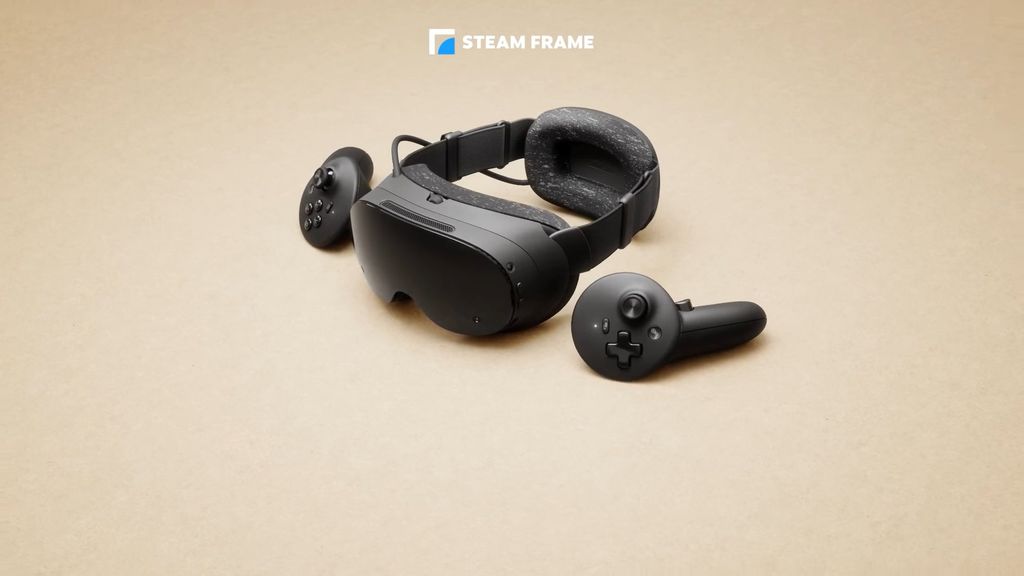
Valve is returning to the fight for VR. Steam Frame – new goggles that will hit the market in early 2026 – are meant to be a response to Meta Quest 3 and at the same time a new approach to VR in the Steam ecosystem. The headset works both standalone and wirelessly connects to PC, offering access to thousands of VR games already available on Steam today. However, there is one problem with the whole thing: the displays are still HD, without HDR and without local dimming, so the image quality remains far behind Vision Pro or Galaxy XR.
Powerful hardware, enormous ecosystem… and LCD like from years ago
Valve emphasizes that Steam Frame is meant to give a new impulse to the VR market, and it indeed looks promising. The headset operates on the Snapdragon 8 Gen 3, which is over 2× faster than XR2 Gen 2 from Meta Quest 3. This means that some VR games will be able to run locally – without a PC.
At the same time, users get the biggest asset that neither Meta, nor Samsung, nor Apple has: the full Steam library. Games can be streamed from the PC using a dedicated 6 GHz adapter, which focuses the transfer where we are looking – thanks to foveated streaming and eye tracking.
Importantly – the goggles cannot be connected via cable. No wires at all. Additionally, it runs on SteamOS (on ARM), which facilitates the porting of applications and expands the ecosystem to include non-gaming applications. However, Valve makes it clear: this is not an XR headset. Passthrough only works in black and white, is basic, and will not replace mixed reality like in Vision Pro.
Displays: Disappointment
And here we come to the biggest downside. Steam Frame uses two 2160×2160 LCDs per eye, without HDR, without local dimming, without OLED depth.
This is "HD VR" level, similar to Meta Quest 3. In VR, this means:
lower contrast,
worse immersion,
visible pixelation,
lack of the "wow" factor that Vision Pro or Galaxy XR achieves with 4K micro-OLED panels.
The refresh rate ranges from 72 to 144 Hz, although 144 Hz is experimental.
Lightweight, modular, and painfully gaming-oriented
Weight: 440 g, which is lighter than many competitors.
Additionally, a modular headstrap with:
3D speakers,
a rear battery (21.6 Wh),
interchangeable with other straps.
Steam Frame also features:
inside-out tracking,
four monochrome cameras,
two eye sensors,
Wi-Fi 7, Bluetooth 5.3,
expansion port (8-lane MIPI camera or PCIe 4.0).
The package also includes new controllers: Steam Controllers VR. Price? Unknown, but it is said to be lower than Valve Index.
Valve Steam Frame – full specifications (EN)
Processor: Snapdragon 8 Gen 3 (4 nm, ARM64)
RAM: 16 GB LPDDR5X
Storage: 256 GB / 1 TB UFS + microSD
Battery: 21.6 Wh, USB-C 45W
Displays: 2160×2160 LCD (per eye), 72–144Hz
Lenses: Pancake, FOV up to 110°
Tracking: Inside-out + eye-tracking
Cameras: 4 external mono + 2 internal
Passthrough: black and white
Connectivity: Wi-Fi 7, Wi-Fi 6E adapter, Bluetooth 5.3
Audio: speakers in the strap, 2× microphones
Weight: 440 g (with strap), 185 g standalone module
OS: SteamOS 3, KDE Plasma
Who will win on this?
Steam Frame may not push VR technology forward – Apple and Samsung are already in a different world of image quality.
But Valve is doing something smarter:
giving full Steam in the goggles,
a gigantic library of games,
strong hardware,
low price (probably),
premium wireless streaming.
This could be the first VR headset that truly reaches the masses, even if it's not the best. And the Index officially goes down in history.
 Katarzyna Petru
Katarzyna Petru












